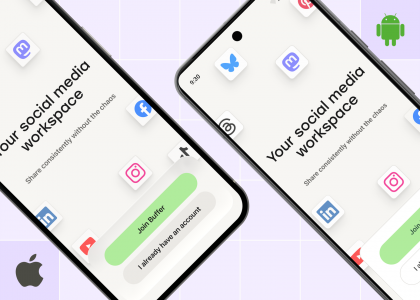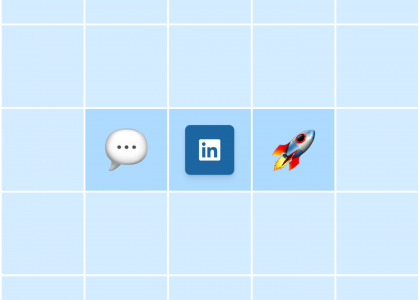Building a company from the ground up always takes time. Building a company in a new category that requires a lot of education while also trying to do so sustainably adds significant runway.
That’s why, when I started thinking about securing funding to scale my supplement brand Rootless, I wanted to think creatively about our sources of capital beyond the traditional VC models that could set us on a different path and model of growth.
I have a much larger mission than selling health products — I’m hoping to build customer demand and supply chain foundations for a more regenerative food system worldwide. This company is a legacy play for me, and I need investors who will see it the same way.
At the same time, we had built a dedicated customer base during our first couple of years on the market. We found strong product-market fit with women navigating perimenopause and post-menopause, had high lifetime value from these customers, and found they were bringing in their friends.
I would regularly get messages from customers raving about the health benefits they saw from taking our products and how their mom, sister, or best friend is now also a customer.
I wondered to myself: What if we could set up a system of fundraising where we could build with the women we were serving?
We decided to launch an equity crowdfunding campaign earlier this year, allowing anyone to invest as little as $500 in exchange for a stake of ownership in our company (unlike a traditional crowdfund, which offers gifts or future products).
Over the course of four months, we raised $313,000 via crowdfunding and were also able to leverage the crowdfund to tell our story more widely and raise an additional $150,000 in angel investment.
This totaled nearly $500,000 from almost 200 investors, with over 65 percent of them being women and first-time investors, including many of our family, friends, and customers contributing.
Best of all, I now have a bank of investors who are truly our champions, and vice versa. They have skin in the game, and they’re ready to help us succeed so we can keep providing products that make their lives better. And, hopefully, they’ll make financial returns along the way.
Equity crowdfunding can be a powerful instrument for consumer companies, but many founders don’t know about or tap into it. Read on to learn more about what it took for my team and I to set up our campaign and help it succeed.
Testing the waters
Launching an equity crowdfunding campaign takes a lot of work, and there’s a decent amount of cost associated with it. So, before we invested in setting it up, we wanted to gauge the level of interest from our community.
We set up a quick landing page with information about the investing opportunity and asked folks how much they’d likely be willing to invest. We framed it as a waitlist to reserve shares (with no requirement to purchase) and included an email signup for updates on when the official campaign launches.
We put zero spend behind this, sending it to our existing email list and social channels. In under two weeks, we had nearly $600,000 in commitments. Not only did this give us a sense that there was enough willingness to move forward with the campaign, it gave us a list of qualified leads we could market to immediately.
Obviously, not all of those reservations ended up converting — we saw 24 percent conversion — but it’s a useful way for companies to test the waters with minimal investment.
Setting up our campaign
While there are a variety of platforms for running equity crowdfunding campaigns, we quickly landed on DealMaker thanks to a referral from another founder friend. While these platforms do take a cut of your earnings, it’s well worth it for the support they offer.
For instance, there are many financial requirements for setting up a fundraiser like this. We had to do a financial audit, file forms with the SEC (the U.S. Securities and Exchange Commission, the government body that regulates investment projects like these), and create an SPV (special purpose vehicle), which allows multiple investors to pool money.
DealMaker guided us through the process, ensuring we were following the right steps and making our future finances and investor management easier on our lean team.
One of my favorite things about DealMaker compared to other crowdfunding sites is the ability to set up the landing page on our website rather than their platform.
That means we own all of the data about visitors, giving us a list of tens of thousands of people who visited the website but didn’t invest, who we can reach out to in the future.
Setting up this landing page essentially amounted to creating a website out of our pitch deck, including information about our company and growth metrics, data about the market opportunities of the women’s hormonal health industry, customer results and endorsements, and what we plan to do with the investment.
It’s important to note that the SEC has strict policies about what you can and can’t say in fundraising content and requires strict disclaimers. DealMaker was instrumental in making sure our website was compliant.
Providing investment education
In addition to educating people about the company and compelling investment opportunity, we also had to do a lot of education on small-scale angel investing.
For instance, so many high-net-worth people and professionals in my network didn’t think angel investing was for them because they didn’t have hundreds of thousands of dollars to put in. So, on LinkedIn, I focused my posts on the need to change the idea about what an “investor” is, the power of women investing in women, and the economic opportunity of the women’s health space. We pitched the press on these angles too, rather than just trying to promote our campaign.
We also tried to put ourselves in the heads of people who might be willing to invest. What do they read or listen to? How do we leverage other trusted sources? Based on this, we ran small marketing campaigns in email newsletters like theSkimm and Morning Brew.
Not just raising money, but building a movement
The best part about this experience wasn’t the money — it’s the fact that I now have an enormous group of individuals who are literally bought into the company.
They serve as our ambassadors: A woman who had invested just $500 recently shared a public LinkedIn post about the brand. They serve as proof of the dedication of our customers: If we decide to do a traditional VC fundraise in the future, we have a quantifiable metric about our community engagement.
And, they serve to push me forward. We’re trying to build a movement of women who are empowered in both their health and in their finances. I get goosebumps thinking about what this amazing community of investors and our team are going to achieve together.






